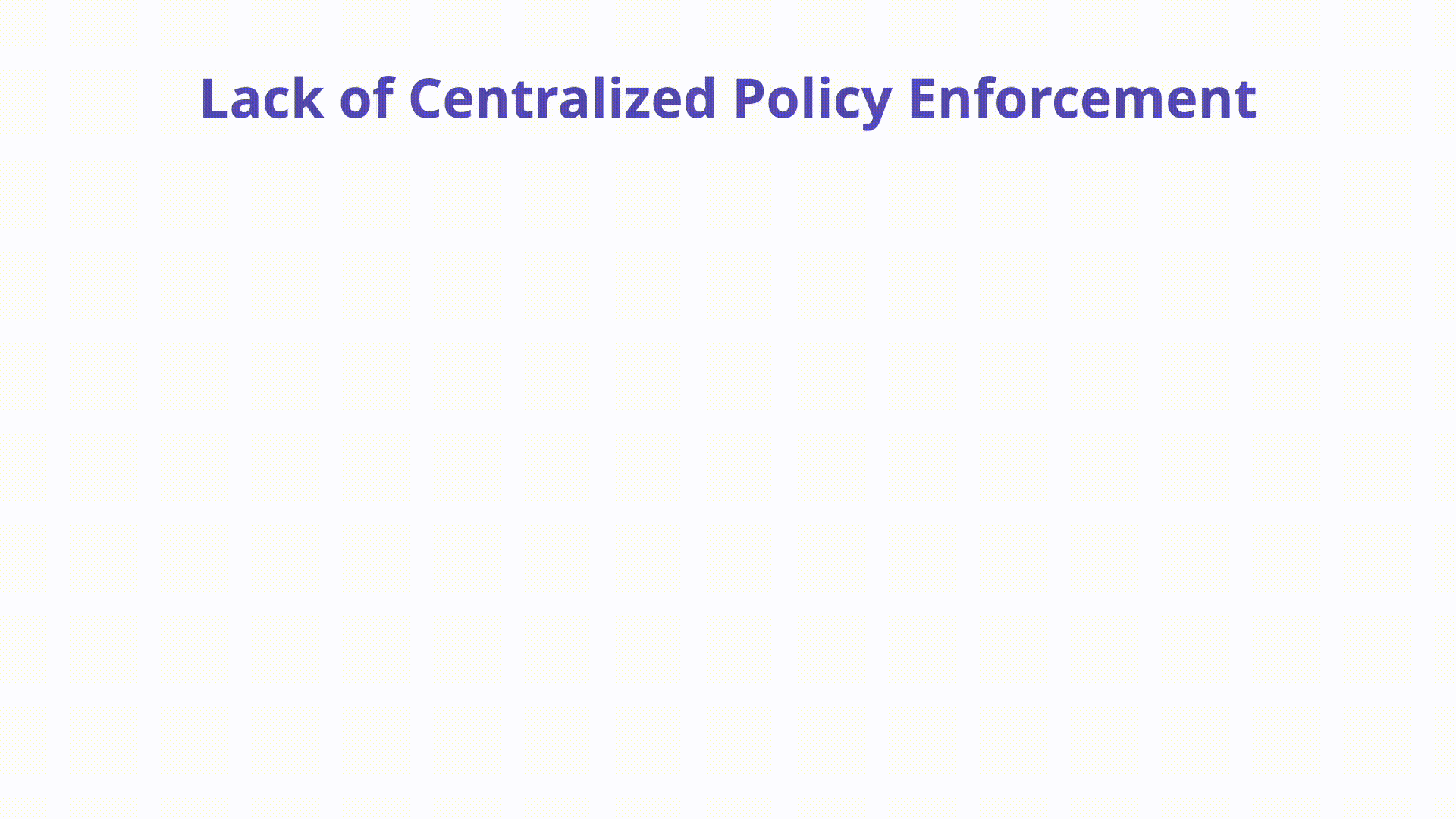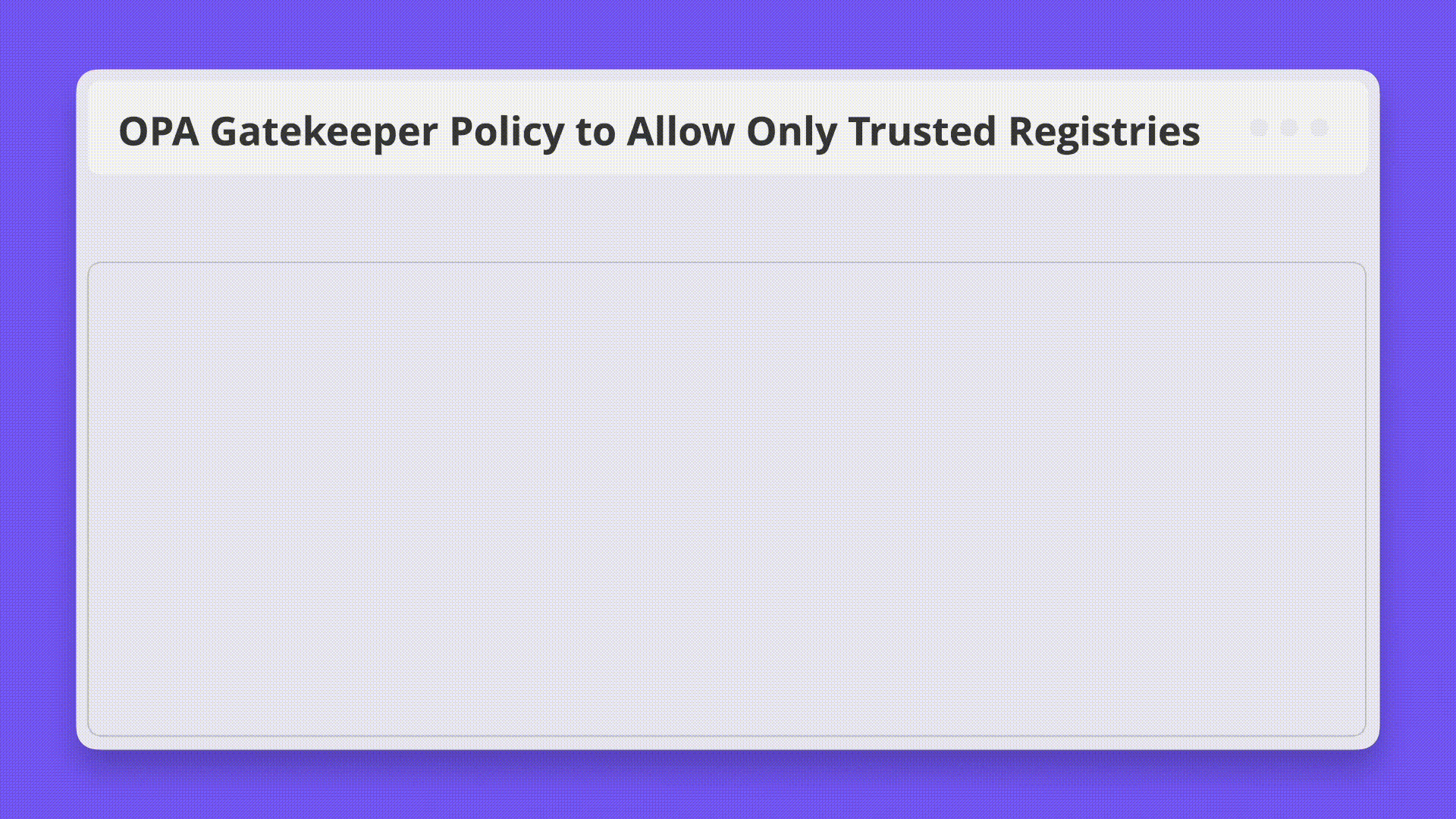K04: Policy Enforcement
Overview
Distributing and enforcing security policies across multiple clusters, clouds, and risk tolerances quickly becomes unmanageable for security teams. The inability to detect, remediate, and prevent misconfigurations from a central location can leave clusters open to compromise.

Description
Kubernetes policy enforcement can and should take place in a few places throughout the software delivery lifecycle. Policy enforcement gives security and compliance teams the ability to apply governance, compliance, and security requirements throughout a multi-cluster / multi-cloud infrastructure.
Example Enforcement Policies:
Disallowing Images from Untrusted Registries: To prevent rogue images from running in certain clusters, it is recommended to distribute a blocking admission control policy that explicitly allows image registries. An example OPA Gatekeeper Rego policy that would block all workloads using images from registries that don’t match open-policy-agent and ubuntu is below:
# Allowed repos
apiVersion: constraints.gatekeeper.sh/v1beta1
kind: K8sAllowedRepos
metadata:
name: allowed-repos
spec:
match:
kinds:
- apiGroups: [""]
kinds: ["Pod"]
namespaces:
- "sbx"
- "prd"
parameters:
repos:
- "open-policy-agent"
- "ubuntu"
How to Prevent
Detecting misconfigured workloads is not enough. Teams need the assurance that misconfigured Kubernetes objects can be blocked upon admission. This is typically handled by an Admission Controller on the Kubernetes API itself. Built-in functionality exists as part of the Kubernetes API itself called Pod Security Standards to enforce policy as part of the Pod Security Admission Controller in the cluster itself. It offers three modes - Privileged, Baseline, and Restricted.
Other OSS projects such as Open Policy Agent Gatekeeper, Kyverno, and Kubewarden all offer policy enforcement capabilities as well to prevent misconfigured pods from being scheduled on a cluster.

Example Attack Scenarios
Example #1: Container Breakout 1-Liner
The following command if run against the Kubernetes API will create a very
special pod that is running a highly privileged container. First we
see "hostPID": true, which breaks down the most fundamental isolation of
containers, letting us see all processes as if we were on the host. The
nsenter command switches to a different mount namespace where pid 1 is
running which is the host mount namespace. Finally, we ensure the workload is
privileged allowing us to prevent permissions errors. Boom. Container breakout
in a tweet!
kubectl run r00t --restart=Never -ti --rm --image lol \
--overrides '{"spec":{"hostPID": true,
"containers":[{"name":"1","image":"alpine",
"command":["nsenter","--mount=/proc/1/ns/mnt","--","/bin/bash"],
"stdin": true,"tty":true,"imagePullPolicy":"IfNotPresent",
"securityContext":{"privileged":true}}]}}' \
/
References
OPA Gatekeeper: https://github.com/open-policy-agent/gatekeeper
Pod Security Admission Controller: https://kubernetes.io/docs/concepts/security/pod-security-admission/
Kyverno: https://kyverno.io/